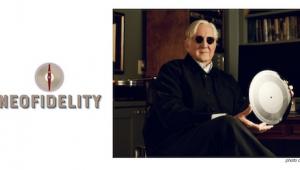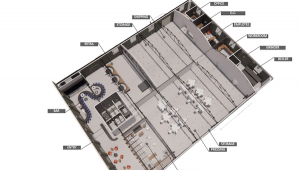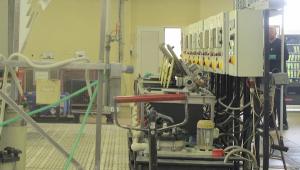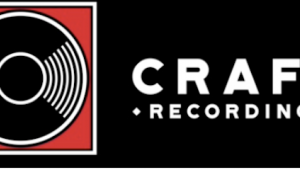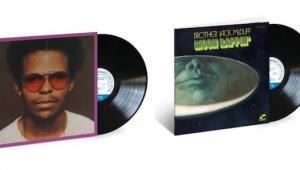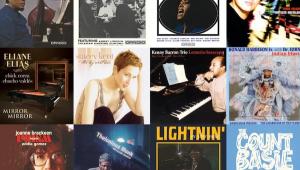SAT (Swedish Analog Technologies) Begins Delivering Four New Pickup Arms
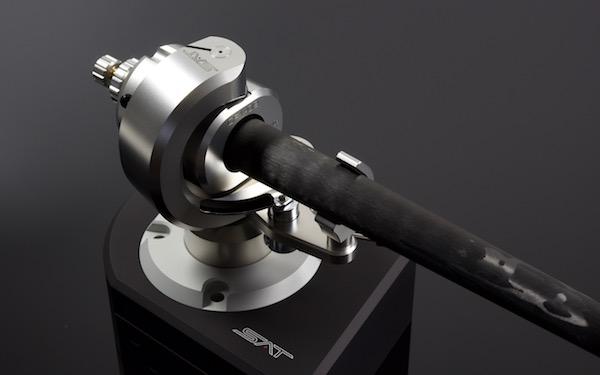
Both 9" models share the original SAT arm's mounting interface, geometry and external dimensions and therefore can be "drop in" replacements for those wishing to move to the new arms. The two longer arms are obviously not "drop in" replacements.
The more affordable LM series brings the original's performance profile to vinyl enthusiasts thanks to more efficient production processes and different materials that allow for less complex assembly techniques. The CF1 series expands and improves upon what the original SAT Pickup Arm achieved and is said to provide across the performance spectrum improvements mechanically and sonically.
The LM and CF1 series incorporate different arm tubes and head shells and feature different small yoke designs and bearings. Materials differ as well. The more costly CF1 arms' pillars and yokes are of stainless steel. The LM's are of lighter weight aluminum, which make them more appropriate for suspended 'tables that have no means of weight distribution compensation.
A new hybrid carbon fiber-aluminum head shell design for both series improves coupling rigidity. The more costly CF1 head shells use a higher grade of carbon fiber, along with an extended bonding area and higher mass.
Both new series feature newly developed arm tubes that no longer feature an outer polymer damping sleeve. The carbon fiber is now exposed across the arm's entire length. The one-piece construction extends from the headshell to the rear stem. An aluminum insert at the front provides a precision head shell interface that produces extremely smooth rotation for fine azimuth adjustments and solid clamping.
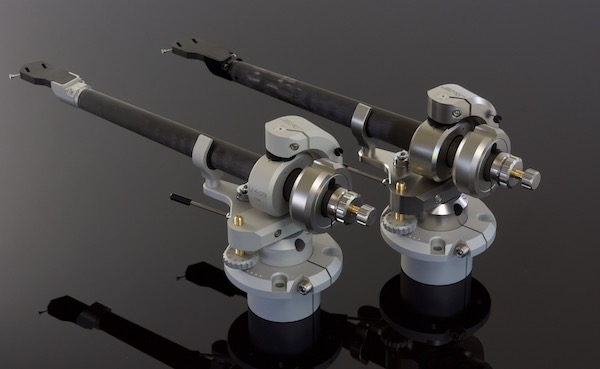
(LM-09 on left, CF1-09 on right)
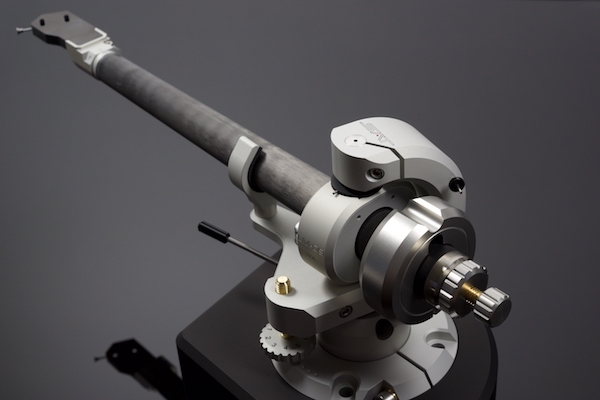
(LM-09)
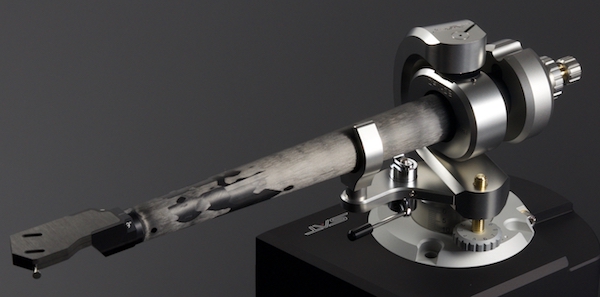
(CF1-09)
The arm tubes of all models have been entirely designed by SAT and made specifically for these arms using carbon fibre-epoxy pre-preg (pre-impregnated fabrics). The carbon fibre plies are stacked in a specific sequence and laid in different directions to provide the stiffness required by the design. Once the tubes have been cured under pressure and heated in an autoclave, they are CNC machined to a tapered profile. In this process, a precision lathe tool cuts the different plies. Different patterns may appear when plies with different orientations are exposed. It is completely normal for every tube to have a slightly different and unique pattern as the plies are hand-laid and are very thin.
The LM series uses the original SAT arm's grade of carbon fiber, though this time in a different laminate and geometry. The CF1 series benefits from a higher grade of carbon fibre in a specific laminate for these arms, with a bigger diameter and cross section for increased rigidity. The differences in material and size are reflected in the first natural resonance frequency of the arm tubes: 4.030Hz for CF1-09 and 3.550Hz for LM-09. Both are extremely high values with the CF1 arm having a significant advantage.
A new small yoke design houses new bearings for the movement in the vertical plane that are pre-loaded during manufacturing and then sealed. They will keep their pre-load and extremely low and even friction characteristics throughout the arms’ life; they are not user-adjustable. This new bearing system is stiffer and much more robust than the previous design. This design is said to completely eliminate any risk of damaging the bearings during shipment or handling under normal conditions.. The small yoke of the CF1 arms is more massive and the bearings are stiffer than in the LM models.
The LM and CF1 series share the same horizontal bearing design. These bearings are protected during shipment with a “transport bearing” that is replaced by a “playback bearing” during installation of the arm. The proper pre-load of the bearings is applied with a newly developed tool that allows the end- user to easily perform the operation; its design eliminates the risk of overloading the bearings.
Both the CF1 and LM series of arms share the same adjustment capabilities: azimuth via rotating headshell and with reference markings, height adjustment via knurled knob with a calibrated scale that can be operated during playback and locked, skating compensation with low-friction pulley, and VTF via a main counterweight, two locking nuts of different mass and a fine-tuning VTF screw. Special attention has been paid to provide rigid coupling between all components. The arm base, main counterweight and headshell use clamping features instead of set screws, with very tight tolerances for precise operation and even contact profile.
The 9” and 12” versions of each series share the same arm geometry as follows:
SAT 9 inch geometry:
Mounting distance : 212,2mm
Overhang : 22,8mm
Offset angle : 26,1 ̊
Innermost groove radius : 75mm
Outermost groove radius : 143mm
Nominal linear offset : 103,4mm
SAT 12 inch geometry:
Mounting distance : 280mm
Overhang : 17,6mm
Offset angle : 20.3 ̊
Innermost groove radius : 75mm
Outermost groove radius : 143mm
Nominal linear offset : 103.4mm
This paper explains why the designer Marc Gomez chose to design the original SAT Pickup Arm as a 9 inch model instead of a 12 inch one. After three years of production, and taking advantage of the launch of the new CF1 and LM series of arms, he decided to add a 12 inch version for each of the lines. This decision was driven by the request from some of the existing owners to be able to have an additional SAT arm that could be mounted on a position or a turntable where a shorter model wouldn’t fit; he also wanted to give consumers who prefer 12" arms the opportunity to experience SAT performance.
Gomez says that both the LM-12 and CF1-12 models have a consistent different sound when compared to their 9 inch siblings. It all can be explained by the physics of their design and how they interact with the cartridges. At the same time he says the original SAT Pickup Arm and all four new models share a common sonic identity, with very high resolution, low distortion and precise transient response, at the highest levels available today.
Retail prices in the US:
LM-09 : 25.400 USD
LM-12 : 29.000 USD
CF1-09 : 48.000 USD
CF1-12 : 53.000 USD




